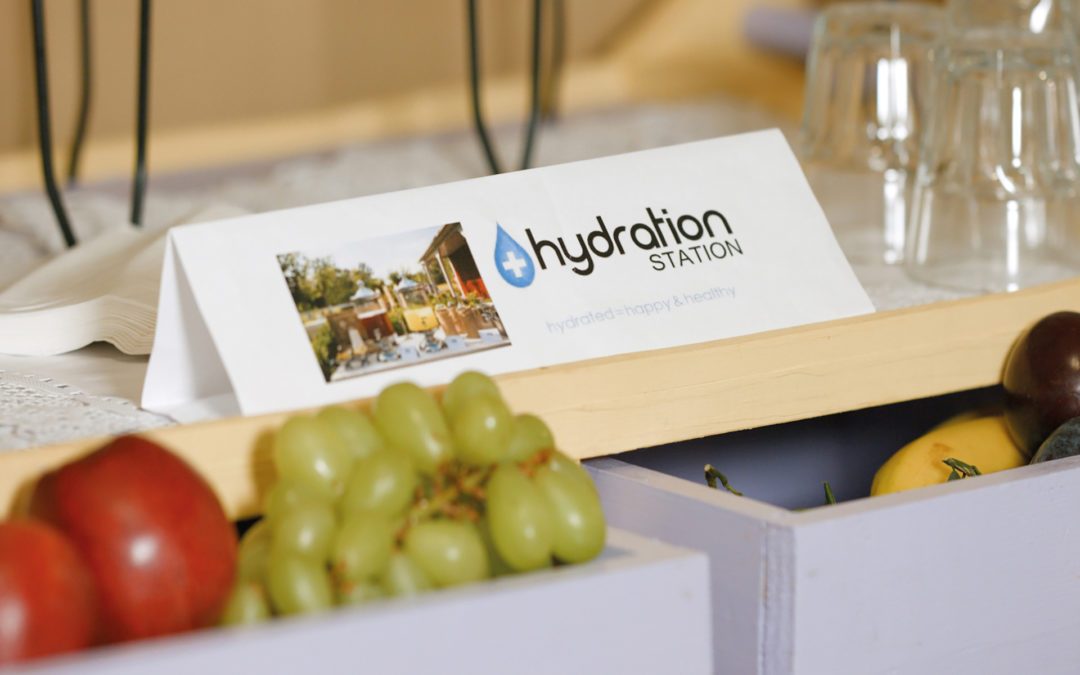Dehydration and Low Electrolytes
Take a moment to think of how you feel when you haven’t had enough to drink all day.
I for one find it difficult to concentrate, focus and make clear decisions. I feel foggy and tired. Imagine if you have a cognitive illness and are also dehydrated. It stands to reason that the more hydrated a person is, the better their feeling of overall wellbeing, engagement, concentration and focus will be.
Elderly adults tend not to feel thirst as strongly as other adults. Common warning signs for mild dehydration can be difficult to spot.
As we age our total body water content decreases. Therefore, an adult over 60 has less water to lose before becoming dehydrated, potentially exacerbating symptoms of current health problems.
Common health problems experienced by the elderly can be a risk factor for people developing dehydration. Understanding the risk factors can help you to keep a closer eye on those who may need extra support in staying hydrated.
Risk factors:
- People over 70 years of age
- Those with swallowing disorders
- Experiencing diarrhoea, vomiting or excessive sweating
- Being bed ridden or unable to reach for drinks successfully
- Having any chronic disease
- Taking any prescriptive medication
- Fear of incontinence
Dehydration is not always detected by caregivers. It is key to maintaining health and, as studies have shown, if not recognised, it can increase risk factors, such as:
- Constipation
- Urinary tract infection
- Respiratory infection
- Medicine toxicity
- An increase in falls and longer stays in hospital
Signs of dehydration can also include low blood pressure, white fingertips, a fast heartbeat and skin that takes longer to return to its normal shape after you pinch it.
How to prevent dehydration in the elderly
It isn’t always easy to get someone to drink more fluids. That’s not to say we shouldn’t try everything we can to make sure fluids are always on offer and easily accessible.
Some tips to encourage hydration:
- Encourage small amounts of fluids throughout the day. Aiming for 4/5 250ml cups of water. Studies have shown that elderly adults who drink 5 glasses of water per day experience lower rates of fatal coronary heart disease.
- Make access to fluids easy for people to drink voluntarily. If they are unable to hydrate themselves independently and in nursing or residential care, allocate staff/hydration champions to offer fluids to those who are most in need (offering at least every hour).
- Keep favourite beverages nearby.
- Have a drink of water or juice with every meal.
- Use fruit to flavour water. It looks great – very colourful and appealing.
- Some foods have a high water content, using hydrating foods encourages extra fluid intake. Make up hydrating snack boxes/plates!
Remember:
- Although tea and coffee do contribute to daily fluid intake, be aware that excess caffeine can sometimes cause feelings of anxiety and disturbed sleep if drank too close to the evening. When consumed around meal times the tannins in tea and coffee can also block absorbency of certain nutrients such as iron.
- Fear of incontinence can diminish some peoples’ urge to drink voluntarily, so limiting fluids to an hour or two before bed could be helpful.
Electrolyte imbalance and hydration
Electrolytes are certain nutrients (or chemicals) present in your body that have many important functions – from regulating your heartbeat, to allowing your muscles to contract so you can move.
The major electrolytes found within the body include calcium, magnesium, potassium, sodium, phosphate and chloride.
Because these crucial nutrients help stimulate nerves throughout the body and balance fluid levels, an electrolyte imbalance can cause a variety of serious negative symptoms. These include:
- Muscle aches, spasms, twitches and weakness
- Restlessness
- Anxiety
- Frequent headaches
- Feeling very thirsty
- Insomnia
- Fever
- Heart palpitations or irregular heartbeats
- Digestive issues like cramps, constipation of diarrhoea
- Confusion/trouble concentrating
- Bone disorders
- Joint pain
- Blood pressure changes
- Changes in appetite/body weight
- Fatigue (including chronic fatigue syndrome)
- Dizziness
If any of these symptoms are experienced for a prolonged period and electrolyte-rich rehydration does not alleviate them, you need to seek medical treatment.
Home-made Remedies
The most basic rehydration drink that contains electrolytes is one made with water, salt and sugar. This mixture is especially useful because the dry ingredients can be packaged ahead of time to be used as needed.
This oral rehydration solution is good for replacing fluids lost due to diarrhoea.
Recipe:
- 1 large lemon – 2 tbsp (keep in mind that firm lemons tend to be drier, whereas lemons with thin skins and a slight give when you hold them are juicer)
- 2 tbsp of honey, maple syrup or sugar
- 1 pinch of sea salt or Pink Himalayan salt (adjust amount so it tastes salty-sweet)
- 300ml water
- Strawberries or raspberries for colour
Stir the drink until the salt and sugar are fully dissolved.
Remember to use sea salt or Himalayan salt rather than table salt! Table salt only contains sodium chloride and not the variety of minerals needs for the electrolyte balance.
If using berries – mix your ingredients in a blender and then strain it to remove seeds/skins. That way you will have a lovely pink electrolyte lemonade.
You can have this lemonade warm, room temperature or cold. To preserve the mixture, keep chilled in the fridge and give a stir before serving.
Top foods to replace electrolyte balance:
- Potassium is in a multitude of fruits and vegetables, particularly leafy green vegetables, such as spinach, turnip greens, collard greens and kale, bananas, tomatoes, oranges, melons, potatoes and sweet potatoes, prunes, raisins, peas and beans. Potassium supports normal cell function, regulates blood pressure and prevents kidney stones.
- Eat a banana! One medium banana has more than 400 milligrams of potassium. Potatoes and yoghurt are also good sources of potassium.
- Use sea salt when cooking, especially when adding to broths, soups and stews.
- Fresh tomatoes and lettuce help replenish chloride.
- Replenish calcium stores with dark green vegetables, almonds, milk or yoghurt. One cup of plain yoghurt contains 415 milligrams of calcium.
- Snack on pumpkin seeds to replenish magnesium stores. Almonds, cashews, peanut butter, spinach and beans are also good sources of magnesium. Adding ground or crushed nuts and seed in with foods is a good way of getting them into the diet.
- Coconut water is not only a good source of electrolytes – including potassium, sodium and magnesium – but it also contains fibre. Try adding it to a mocktail on a sunny day!



